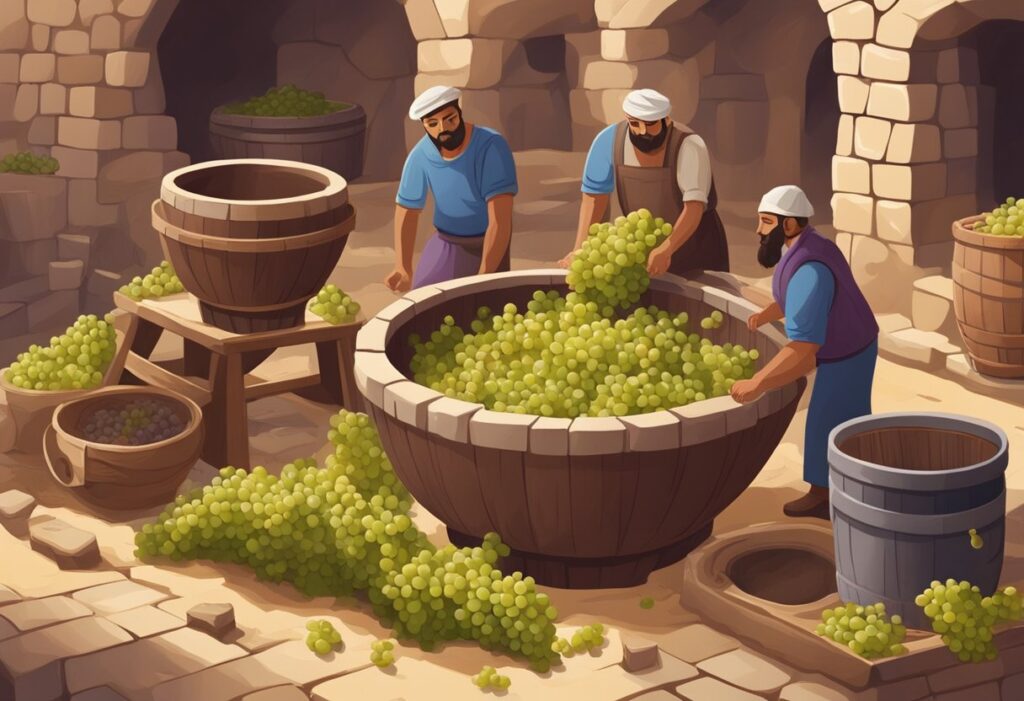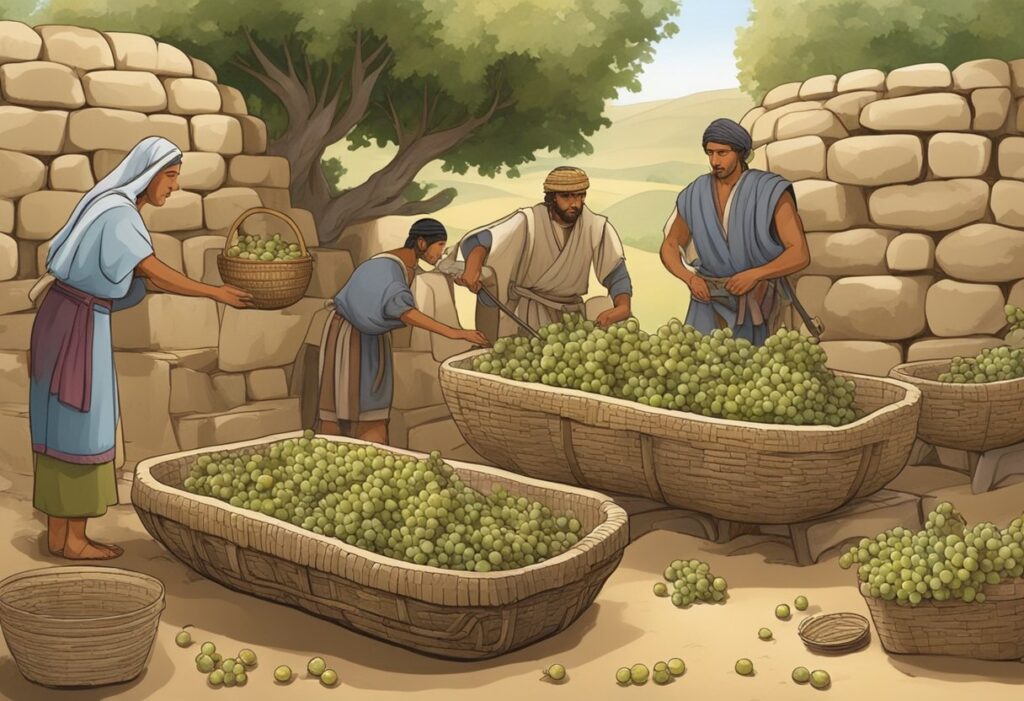Wine has been intertwined with human culture and societies for centuries. It has shaped history through religious rituals, social practices, and culinary traditions. By pairing wine with food, cultures highlight the flavors and textures of both, creating a harmony that enhances the dining experience.
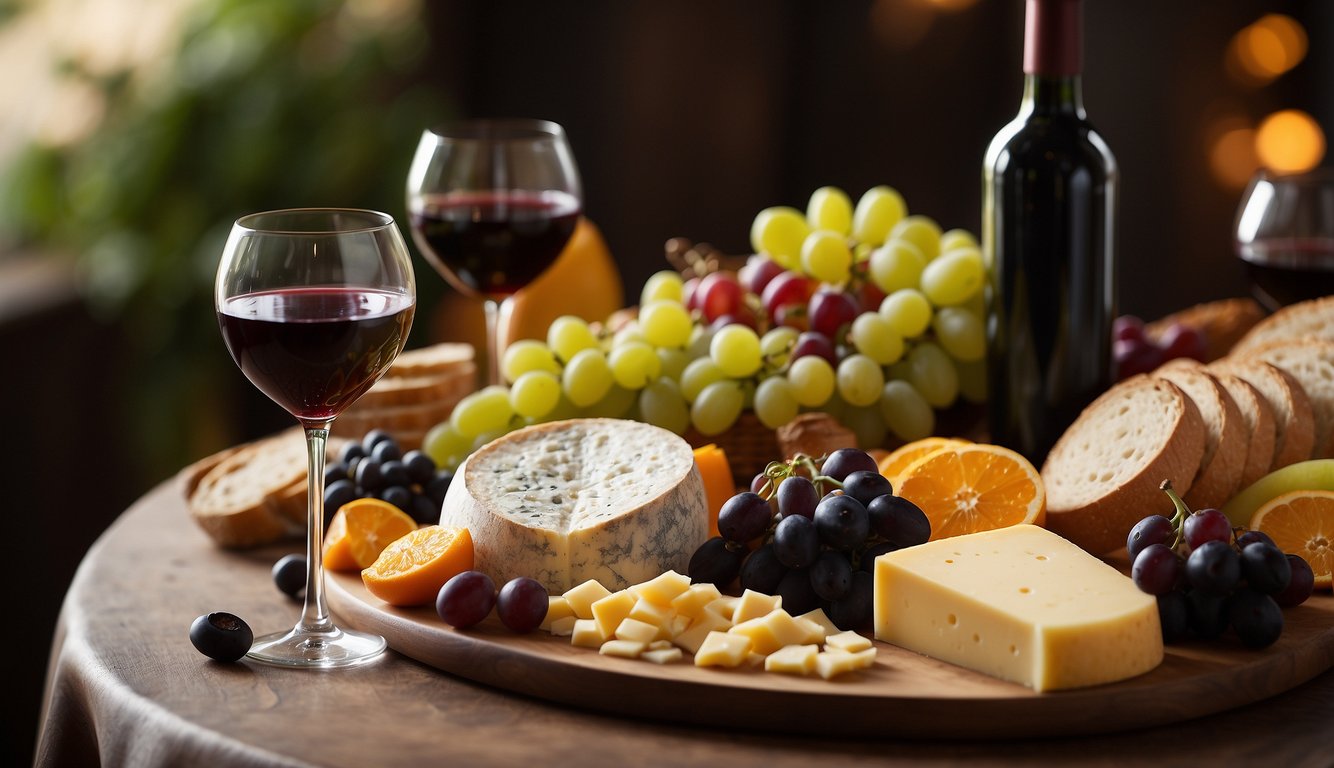
In places like France and Italy, wine and food have evolved together. The local cuisine often complements the local wine perfectly, reflecting the region’s terroir and history. For instance, French cuisine is famous worldwide, and wines from regions like Bordeaux or Burgundy play a significant role in creating memorable meals.
Exploring the cultural significance of wine is like taking a journey through the evolution of human civilizations. Wine has left its mark on art, traditions, and daily life. Its role in shaping societies is a testament to its enduring appeal and importance. Dive into the rich history and discover how wine has become an essential part of various cultures around the world.
The Roots of Wine in Human Civilization
Wine has journeyed from its discovery to becoming a symbol of cultural richness. It plays a key role in mythology, ancient rituals, and social customs across different civilizations.
Ancient Beginnings and Mythology
In ancient times, wine was more than just a drink. As early as the Neolithic era, people discovered fermentation, possibly by accident. Ancient civilizations like the Egyptians viewed wine as a divine gift.
Mythology also played a significant role. In Greece, wine was associated with Dionysus, the god of wine, pleasure, and festivals. His followers celebrated through wine-drinking rituals. This practice highlighted wine’s importance in social and religious gatherings, making it a vital part of Greek culture.
Cultivation and Expansion Across Europe
Wine cultivation began in regions such as ancient Mesopotamia. It spread across Europe through trade and conquest. The Romans further developed wine-growing techniques and brought vineyards to new territories, making wine a staple in everyday life.
In Europe, different regions started producing their own varieties. Local culinary and winemaking traditions evolved together. For example, regional Italian dishes often pair perfectly with local wines. This tradition of enhancing cuisine with local wine persists today, demonstrating wine’s deep cultural roots.
Wine in Religious and Cultural Rites
Wine has also held a central place in religious ceremonies and cultural rites for millennia. In Greek and Roman times, it was used in various rituals and offerings. Christianity later adopted wine into the Eucharist, symbolizing the Blood of Christ.
This ritual significance extends to various cultures. Wine symbolizes community, celebration, and spirituality. Its use in religious practices underscores its role in cultural and social traditions, highlighting its significance far beyond just being a beverage.
Wine and Cuisine Through the Ages
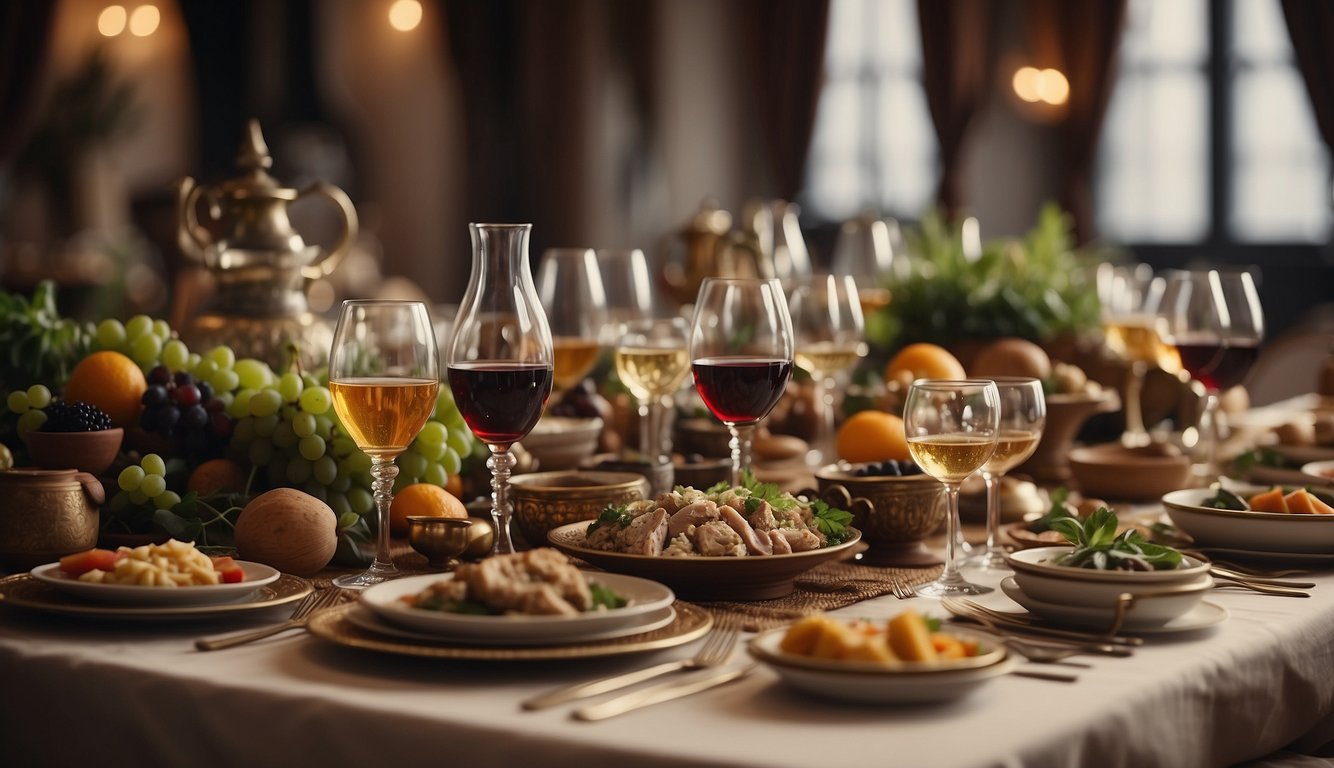
The history of wine pairing with cuisine spans centuries, reflecting unique cultural and culinary traditions. From grand medieval feasts to the influence of literature, these practices shaped the dining experience.
Medieval and Renaissance Feasts
During the Medieval and Renaissance periods, lavish feasts were an important part of social and political life. Noble families would host grand banquets to display wealth and status. Wine flowed freely at these events, highlighting its importance in the culinary culture of the time.
The medieval table often featured roasted meats, rich stews, and heavy breads, paired with robust wines from nearby vineyards. Dishes like roasted boar and pheasant were common, and wine was used to enhance these hearty meals. This period also saw the beginning of more formalized methods of wine and food pairing.
During the Renaissance, there was a renewed interest in the classics, and this reflected in the dining scenes. Chefs began experimenting with flavors, and wine pairing became an art. For example, white wine was paired with lighter dishes like fish, while red wine complemented red meats. This tradition still influences modern culinary practices.
The Development of Local Cuisines
Local cuisines and wines often evolved together, creating natural pairings that stand the test of time. In regions where certain foods were plentiful, local wines were crafted to complement those flavors. Bordeaux reds with local lamb or Provence rosés with seafood are just a couple of examples where geography influenced pairing traditions.
These regional pairings showcase the deep connection between local terroir (land) and cuisine. For instance, in Italy, the Tuscan chianti pairs perfectly with tomato-based dishes like pasta, reflecting the local ingredients and winemaking traditions.
Another example comes from Spain, where Rioja wines pair beautifully with tapas and jamón serrano. The Spanish tradition of small dishes accompanied by local wines underscores the country’s emphasis on leisure and community in dining. These traditions continue to shape and enrich the culinary arts.
Literature and Dining
Literature has also played a role in shaping wine and food pairings. Many classic works of literature provide a window into the dining habits and culinary preferences of the era. For example, Shakespeare’s plays often mention wine as part of the feast, reflecting Renaissance preferences for pairing wine with meat.
Authors like Ernest Hemingway and F. Scott Fitzgerald wrote extensively about food and wine in their novels, highlighting the importance of these experiences in cultural settings. Hemingway’s love for Spanish wines and French cuisine brought attention to these pairings in popular culture.
In more recent times, literature that explores food and wine has become its own genre. Books that focus on culinary travel or memoirs of chefs often discuss the intricate balance between food and wine, emphasizing the continuing importance of this tradition in modern dining experiences.
Geography’s Influence on Wine and Food Pairings
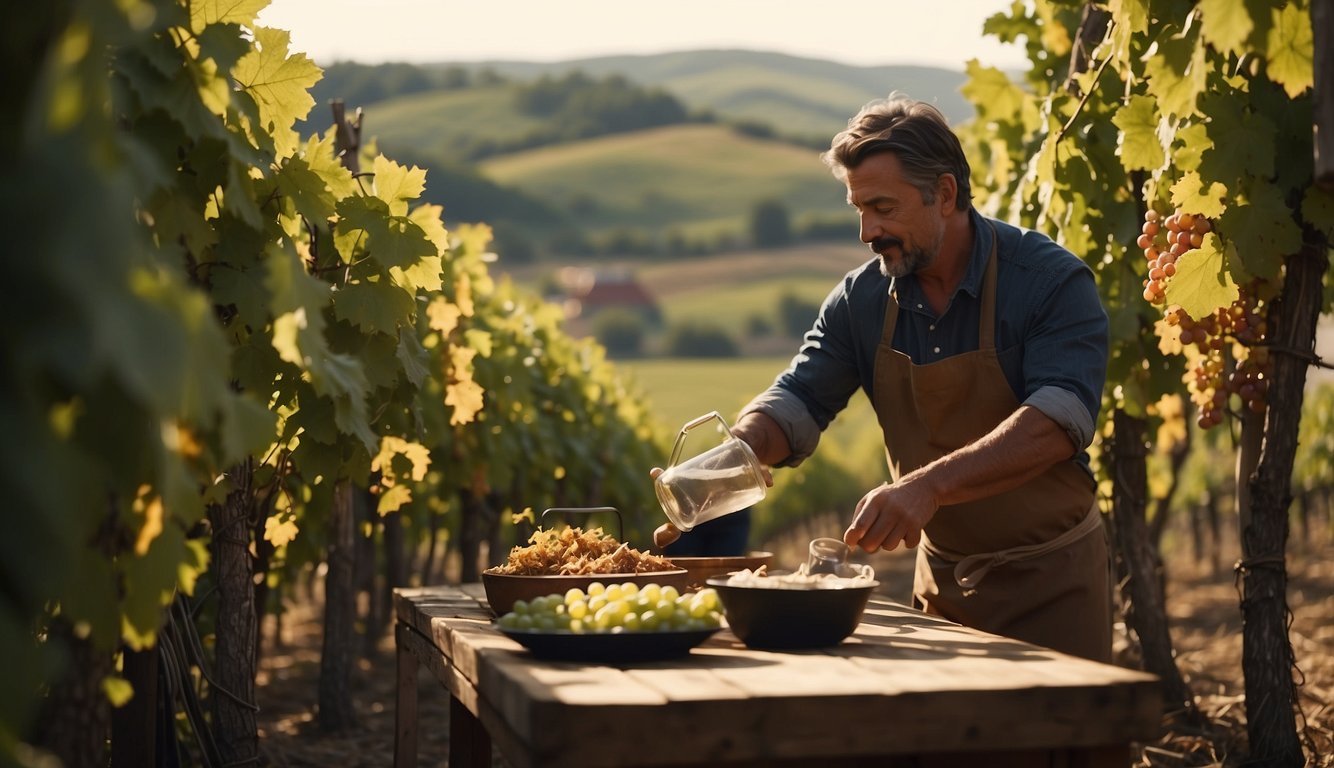
Geography plays a crucial role in shaping both wine and food pairings. The climate, soil, and traditions of a region influence the characteristics of the wine and how it complements local cuisine.
Terroir and Tradition
Terroir refers to the unique combination of climate, soil, and landscape that affects how grapes grow. In regions like Burgundy and Bordeaux, the specific conditions make wines that have distinct flavors. For instance, Burgundy’s cool climate and limestone-rich soils produce exceptional Chardonnay. This wine pairs beautifully with delicate dishes like roast chicken or mild cheeses.
Tradition is also vital. Many regions have developed culinary and winemaking customs over centuries. In Burgundy, for example, the local cuisine often includes dishes like coq au vin, which pairs wonderfully with regional red wines. These pairings have stood the test of time because they highlight the best aspects of both the wine and the food.
Old World Versus New World Wines
Old World wines, from regions like France, Italy, and Spain, often reflect the traditional practices and terroir of their regions. Old World wines like Bordeaux or Chianti usually have a subtle complexity that pairs well with savory dishes. For example, a Bordeaux pairs excellently with lamb because of its balanced structure and earthy notes.
New World wines, from places like the USA, Australia, and Argentina, tend to emphasize fruitiness and higher alcohol content. A Malbec from Argentina, with its rich, bold flavors, pairs perfectly with grilled meats, enhancing both the wine and the dish. The climate in these regions, often warmer, allows grapes to ripen more fully, producing wines that are fuller-bodied and sometimes sweeter.
Pairing Food Dishes with Wine
Pairing food dishes with wine involves considering the flavors and textures of both. Chardonnay from cooler regions like Burgundy pairs well with lighter dishes, such as seafood or salads, because the wine’s acidity balances these flavors.
For richer foods, such as grilled steak, a Malbec from Argentina is a great choice. Its robust flavors stand up to the heartiness of the meat. Understanding these regional characteristics helps in creating perfect food and wine pairings. You’ll find that these combinations often bring out the best in both the wine and the dish, making your dining experience truly memorable.
Explore different wines and dishes based on their geographic origins to fully experience the diversity and richness that these pairings offer.
Cultural Impact of Wine Across Continents
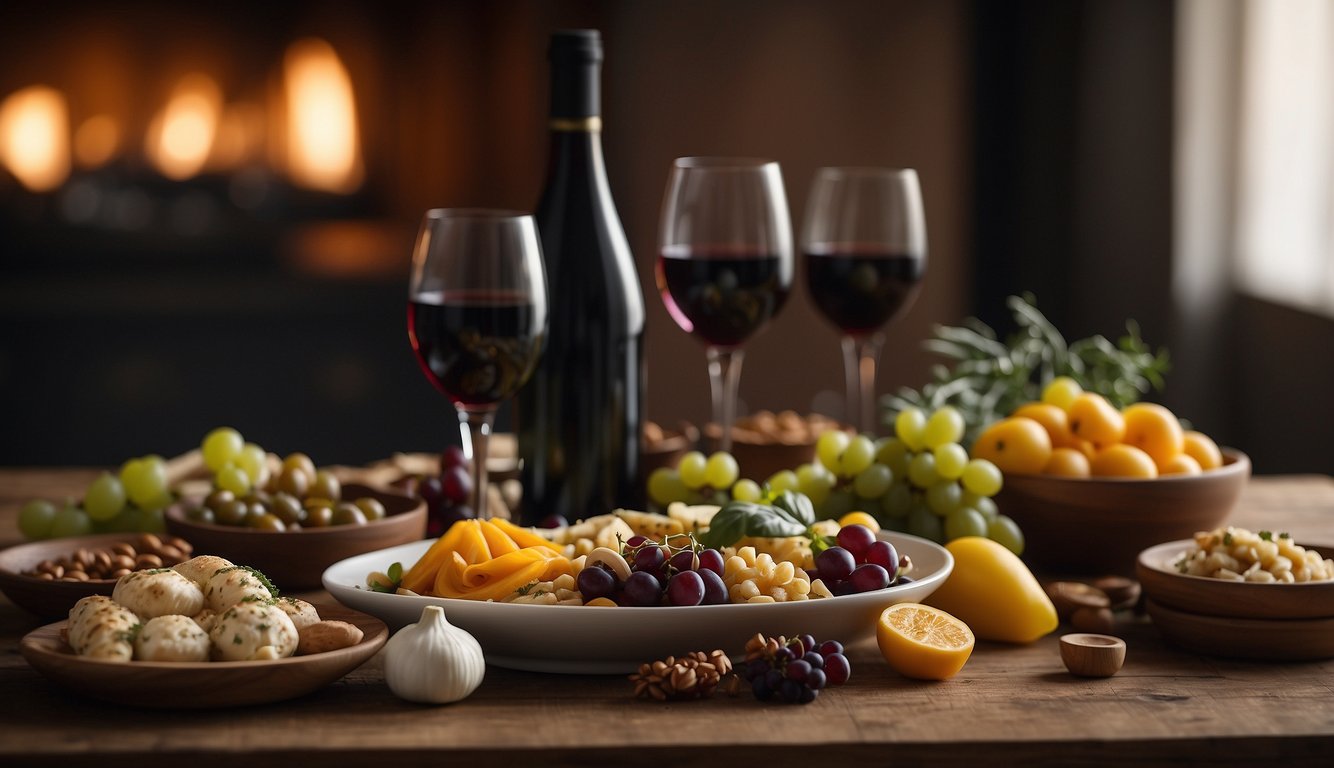
Wine has shaped many cultures across the globe, influencing not only the way people celebrate but also how they live and interact with one another. From Europe to the Americas, wine’s cultural footprint is both deep and diverse.
Wine’s Role in Society and Celebrations
In France and Italy, wine is more than a drink; it’s a way of life. Nearly every meal is accompanied by a local wine, reflecting the country’s terroir and tradition. These nations are celebrated for their wine-making history and expertise.
Argentina and Chile have integrated wine into their social fabric. Argentine Malbec and Chilean Cabernet Sauvignon have become essential in both everyday gatherings and significant celebrations.
In the United States, wine culture has flourished, especially with the rise of California vineyards. Wine tastings and tours at places like Napa Valley are popular social activities.
Australia also embraces wine, particularly in regions like Barossa Valley. Australian wines are central to barbecues and festive occasions, showcasing local flavors and innovation.
In various cultures, wine is often used in religious ceremonies and festivals, further highlighting its importance. Wine unites people, enhances culinary experiences, and plays a significant role in cultural identities across continents.
Explore more about the cultural meaning and history of wine at The Cultural Significance of Wine.
Contemporary Wine Industry and Its Connoisseurs
Today’s wine industry blends tradition with modern technology to innovate and elevate the wine experience. From the meticulous process of winemaking to the elegance of wine tasting, contemporary practices highlight both the art and science behind each bottle.
The Art and Science of Winemaking
Winemaking today combines ancient techniques with advanced technologies. Fermentation and aging processes are fine-tuned for optimal taste. Winemakers use state-of-the-art equipment to control fermentation temperatures and monitor the chemical composition of wine. The art lies in blending different grape varieties to create unique flavors. This balance of creativity and precision ensures that each wine has a distinctive character.
Modern Vineyards and the Role of Sommeliers
Modern vineyards use innovative agricultural practices to improve grape quality. Techniques such as precision viticulture and sustainable farming are common. Vineyards employ drones and sensors to monitor soil health and vine growth. Sommeliers play a crucial role in the wine industry. They are experts in wine tasting and pairing, helping you choose the perfect wine to complement a meal. Sommeliers must understand the nuances of different wines and how they interact with various dishes.
Wine Tasting, Collecting, and Trends
Wine tasting is not just about drinking; it is an immersive experience. Professional tastings involve assessing a wine’s appearance, aroma, and taste. Today’s trends include organic and biodynamic wines, which are made with minimal chemical intervention. Collecting wines has also become popular, with enthusiasts seeking rare and vintage bottles. Modern collectors use climate-controlled storage to preserve their wines’ quality for years.
The contemporary wine scene is vibrant, reflecting the dedication of those passionate about this timeless beverage.
